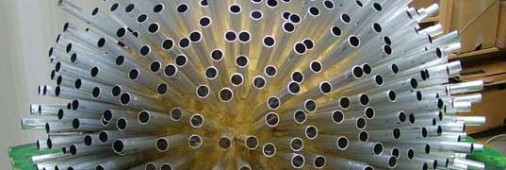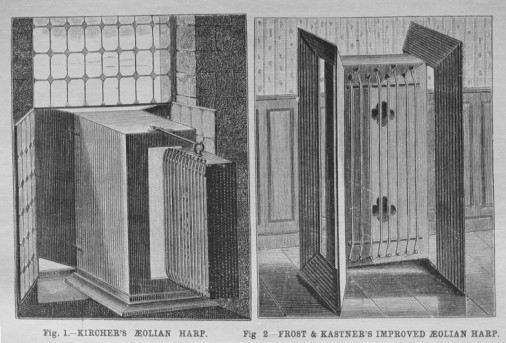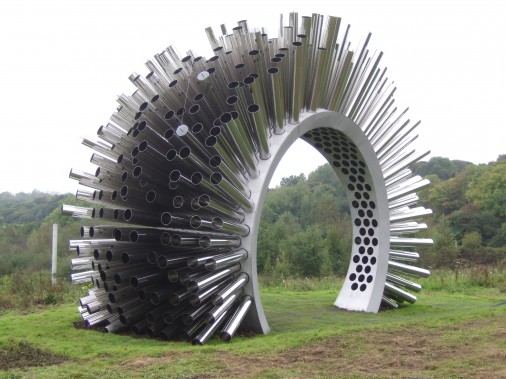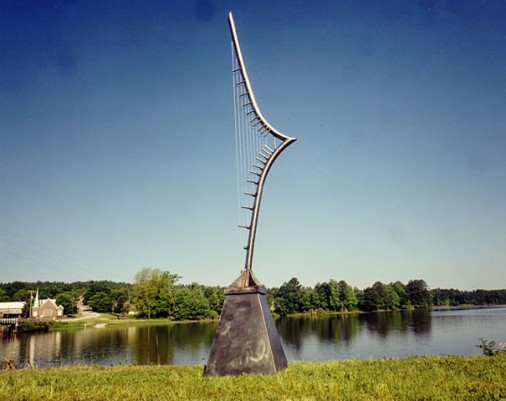Aeolian Wind Harp Intrigue

The sound of the Aeolian Wind Harp is sometimes called creepy and other times, healing. They have been built in city squares, on the tops of hills, and near the water’s edge. Yet, it is also found hanging in the windows of crowded Italian backstreets and the Australian Outback. An Aeolian wind Harp can be any size, any shape, with or without strings and made of nearly any material.
A quiet excerpt from the Wind Songs CD
King David recognized the wind harp as an alluring instrument when his lyre strings were caught by the wind echoing sounds of the unseen. Nabokov’s Lolita (link) used the Aeolian wind harp as symbolism of sensuality and hidden feelings. Throughout history, the differing resonances from these simple instruments have been attributed to voices of the dead or sounds of the earth.

Aeolian Harps, named after the Greek god of Wind ‘Aeolus’, first appeared in Grecian culture circa 6 BC, when Orpheus held poetry readings accompanied by the music of Wind Harps. Above, early wind harp illustrations circa 1695 from Harmonic Wind Harps.
In more recent times, Alan Lamb, an Australian musician recorded the sounds of his wind harp in outback after the fires destroyed many thousands of acres. The first sounds imitate the rushing fire followed by a buzzing rhythmic tempo. As the sound increases, the rhythm changes becoming more definitive and then wanes into soft whispers. Increasing again, your imagination takes over understanding the agony of fear in the whining tones.
Alan Lamb explains the complex logistical and technical requirements of his projects as well as describing the ideal qualities of a successful aeolian harp installation - “Such structures to possess the properties of beauty, complexity and evocation of the emotional, the spiritual and the imaginary.”
Harmonic Tones & Physics
For those interested in the relationship of physics and harmonic tones as demonstrated using the Aeolian wind harp, Professor Henry Gurr discusses the interaction in depth.
The musical sounds of an Aeolian Harp are the results are of vortex “swirls” flipping around in the back of the strings… left-right…. left-right… You may watch these vortexes in the left-right ripples moving along a flag during a medium breeze. It is this very same alternating push-pull (at resonance frequency) that can cause a flexible suspension bridge to twist and sway larger and larger….. until destruction.
Gurr explains that the haunting tones are due to the manner in which the wind touches the strings driving up the resonance resulting in overtones that are not always harmonic chords. Professor Gurr has taken such an interest in the chording differentials of the wind harp that he has made his own.
Observe Aeolian Harps Around You
Aeolian Harp sounds can also be experienced during the daily activities of the very observant. The “moan” of the wind in pine trees, or the “woo- woo” of tree limbs in fierce strong winter winds, are “natural”, Aeolian Harps. You may, in strong winds, hear whistle-like sounds (or “woo- woo” sounds) from open holes and slots, such as large cracks in doors. Be sure to investigate these sounds. They are closely related to the sounds from Aeolian Harps.
Above is one of the Aeolian wind harps created by Profeessor Gurr at the University of South Carolina Aiken. If you are interested in making your own aeolian wind harp, check out his instructions.
Even in the 21st Century, the intriguing qualities of the Aeolian wind harp are capturing the imagination of the virtual world.
The Singing, Ringing Tree by Tonkin Liu
Sources:
- Aeolian sculpture will be music to the ears of Eden visitors
- 20 Unique and Weird Musical Instruments
- Harmonic Wind Harps
- Inhabitat


Leave a Comment
Logged in as - Log out